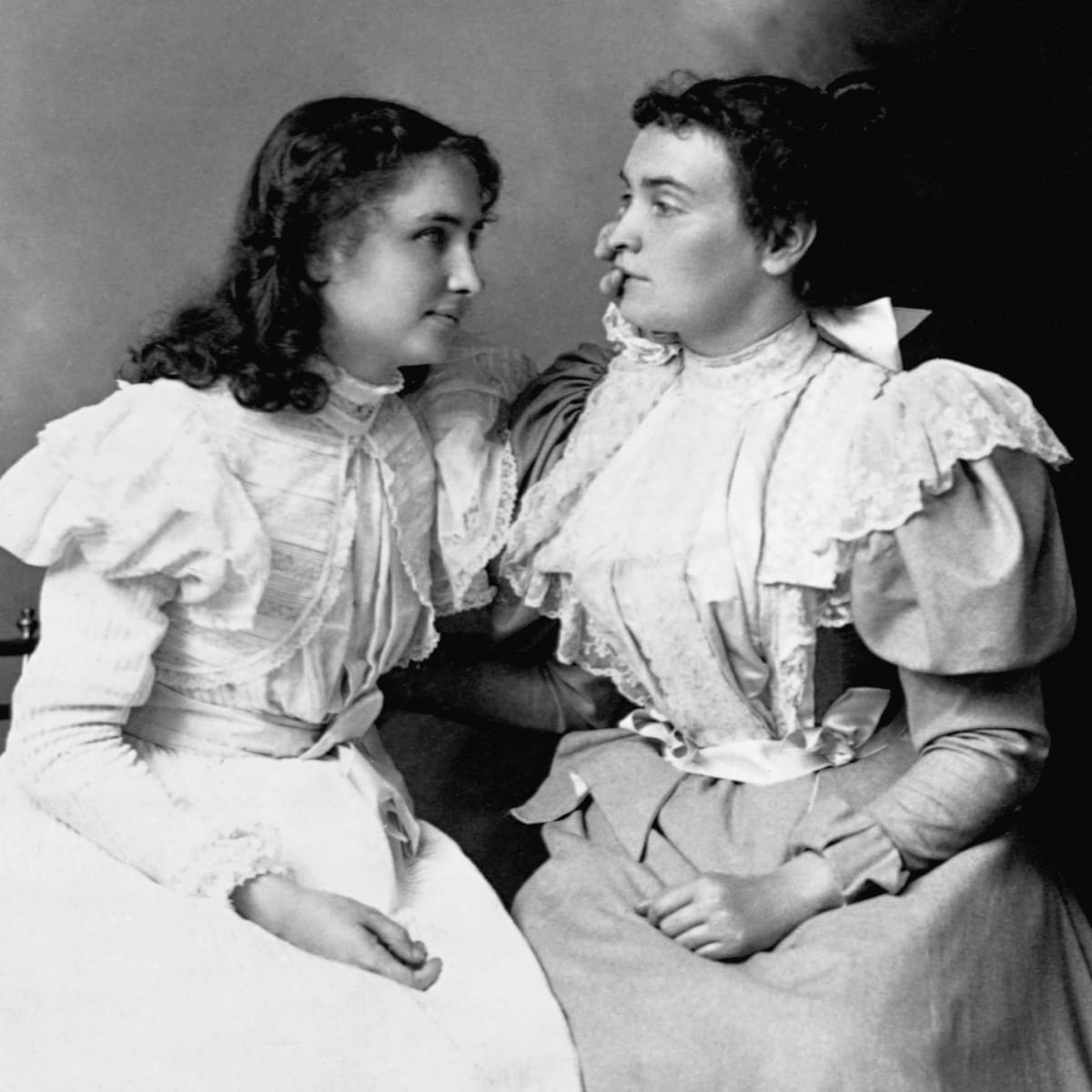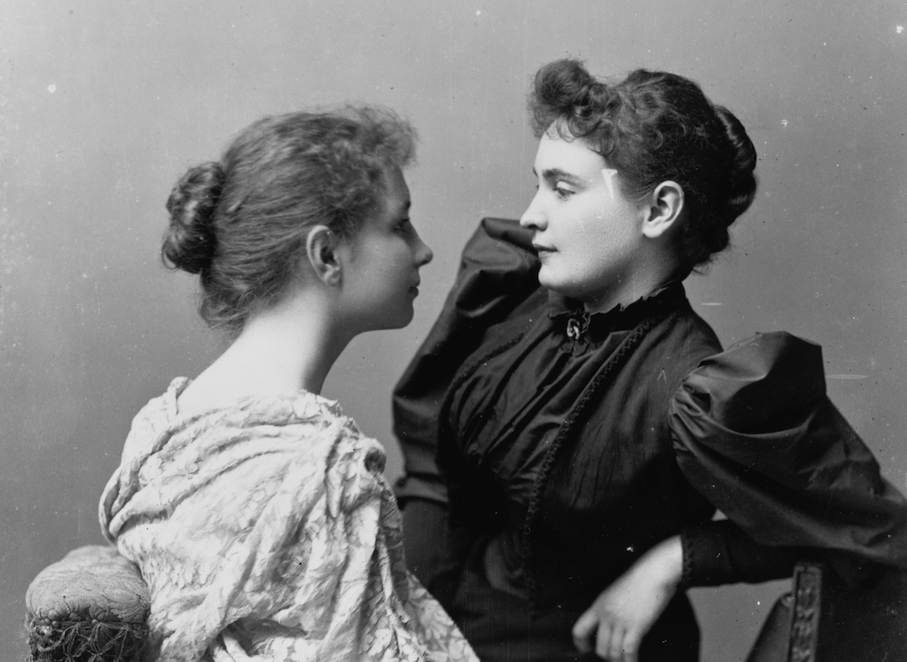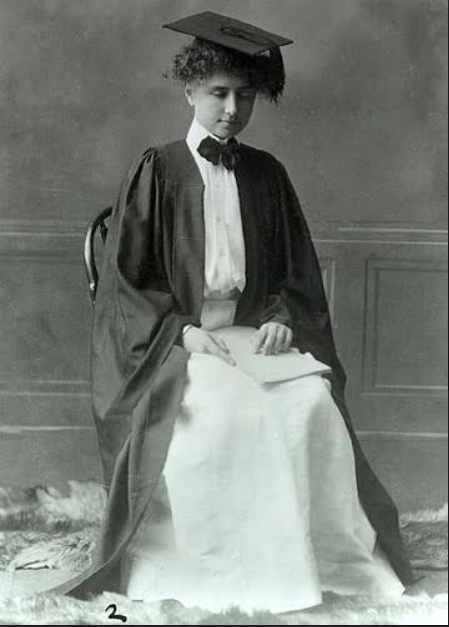
Helen Keller using Tadoma on Anne
[Anne Sullivan | Biography]
'“Disability really was looked at as an issue of civil rights rather than an issue of charity and rehabilitation at best, pity at worst”' (Disability History: The Disabilities Rights Movement).
Helen Keller, a famous deafblind woman most known for her persistence through her struggles in learning to communicate, became deaf, blind, and mute at 19 months due to Scarlet fever, therefore, unable to communicate. Most people only know about Helen Keller, leaving out Anne Sullivan's side of the story.
The Keller family had written to Anagnos several times "looking for a governess for their daughter Helen" ("Anne Sullivan"). Anne Sullivan was only 20 when she was chosen to teach the girl in Alabama and, "although a bit intimidated by the challenge, Sullivan knew this was just the opportunity she needed. She spent the next few months studying the reports of Laura Bridgman's education by Howe and her other teachers" (Anne Sullivan | Perkins School for the Blind). Sullivan travelled to Alabama in 1887 to work with the Kellers.
Desperate, but unsupportive, Helen's family disapproved of Sullivan's methods. Helen had been allowed tantrums until Sullivan came. “She had gained permission to remove Helen from the main house and live alone with her in the nearby cottage” (American Foundation for the Blind).
April 5, 1887, Anne Sullivan broke the communication barrier. When Helen made the connection of the word "water" to the physical liquid, Sullivan realized her potential.
"Through Sullivan’s extraordinary instruction, the little girl learned to understand and communicate with the world around her. She went on to acquire an excellent education and to become an important influence on the treatment of the blind and deaf" (Helen Keller: Major Achievments)
"Sullivan decided that Keller could benefit from the Perkins School's program, and the two spent time there off-and-on throughout Keller's adolescence. They also sought aid for Keller's speech at the Wight-Humason School in New York City. When Keller's family could no longer afford to pay Sullivan or manage Helen's school costs, a number of wealthy benefactors—including millionaire Andrew Carnegie—stepped in to help them defray their costs." ("Anne Sullivan")

Helen Keller using Tadoma on Anne
[Anne Sullivan | Biography]

Well known picture of Helen Keller and Anne Sullivan
[Spring Field Mueseums]

Helen Keller after graduating from Radcliffe.
[Radcliffe College]
Anne Sullivan went on to help Helen Keller become the first-ever deafblind student to graduate college. In 1900, "Keller gained admittance to the famous Radcliffe College in Cambrige and in 1904, graduated with a Bachlor of Arts Degree" (Helen Keller | Perkins School for the Blind).
Circa 1903, with the help of Anne Sullivan, "Helen Keller wrote her autobiography, The Story of My Life, in which she recounted her journey from a child with an extreme handicap to a 21 year old student at Radcliffe" (Helen Keller: Major Achievments). While working on the autobiography, Anne met John Sullivan Macy, and he fell in love with her. "After refusing several marriage proposals from him, she finally accepted. The two were wed in 1905" ("Anne Sullivan").
Anne’s marriage did not affect her relationship with Keller. Sullivan lived with her husband in Massachusetts and the marriage ended around 1913 when Macy moved to Europe, but the couple never legally divorced.
"Sullivan began to experience health problems, [again] and Polly Thomson [Anne's replacement] became Keller's secretary. The three women eventually took up residence in Forest Hills, New York. The trio struggled to make ends meet" ("Anne Sullivan"). By the 1920s, Sullivan lost most of her vision and had her right eye removed to improve her health. After spending most of her life helping Helen Keller, Sullivan died peacefully in her home in 1936.
"Her ashes were placed at the National Cathedral in Washington, D.C. — a distinct honor, as it is also the final resting place of President Woodrow Wilson and other distinguished individuals. At her funeral, Bishop James E. Freeman said, 'Among the great teachers of all time she occupies a commanding and conspicuous place. . . . The touch of her hand did more than illuminate the pathway of a clouded mind; it literally emancipated a soul'" ("Anne Sullivan").
Created by: Yulianna Bullock, Mataya Pacheco, Emma Reynolds